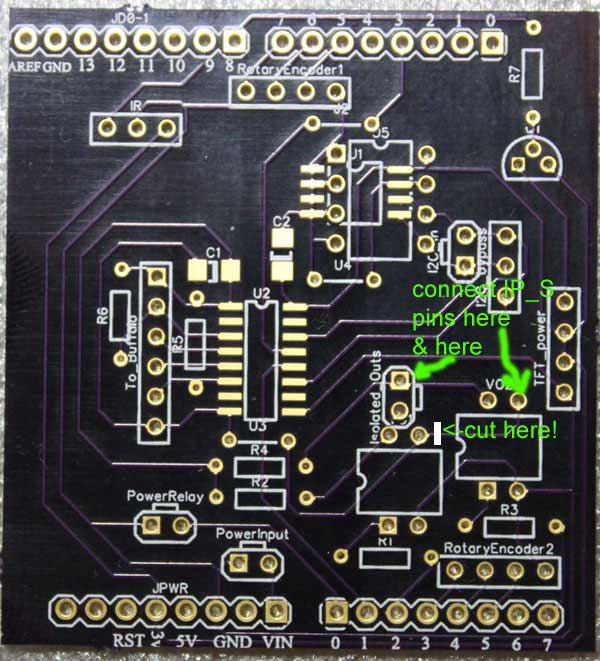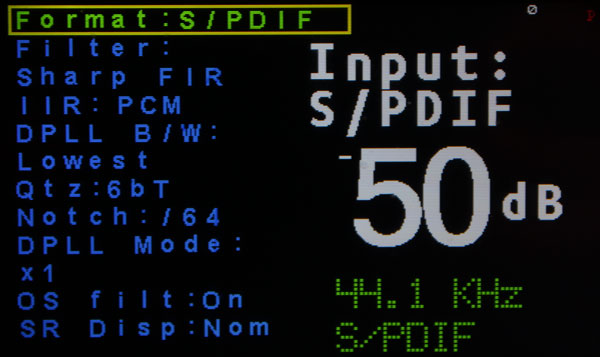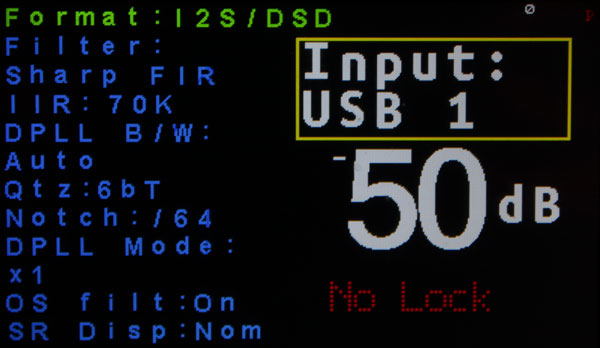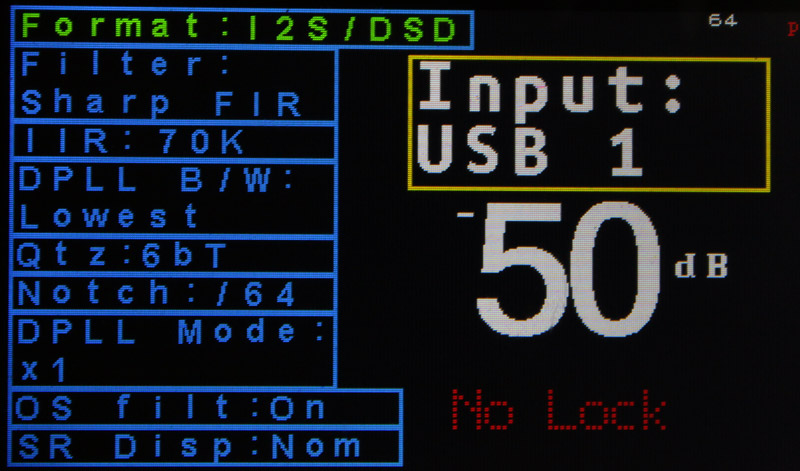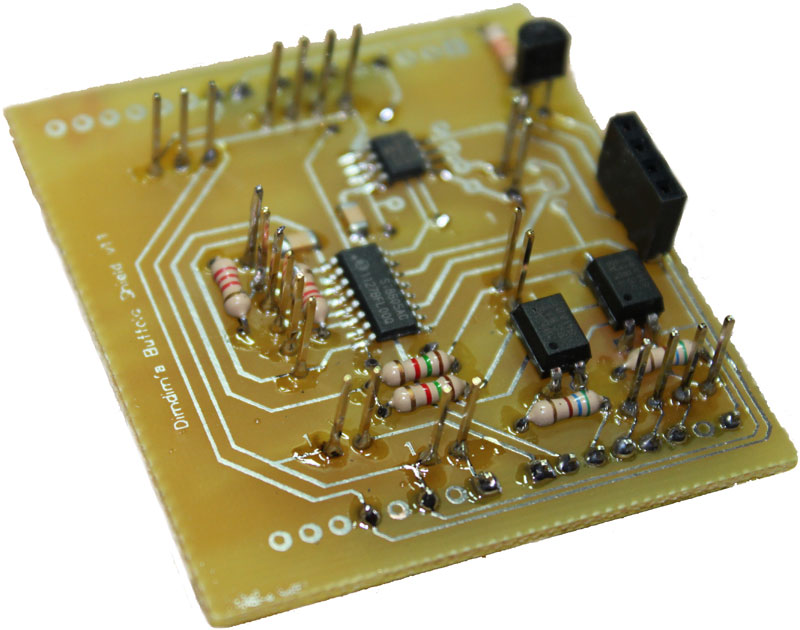Following my previous post on TFT HiFiDuino v.1.00, this is what you need to know in order to build my Buffalo Shield.
First of all, here are the DipTrace files (schematic & PCB):
Buffalo Shield v.1.1 for TFT HiFiDuino (schematic & PCB) (9821 downloads )
And here is the relevant build & wire guide:
Buffalo Shield v.1.1g for TFT HiFiDuino (documentation) (6909 downloads )
This is what DipTrace thinks the board ought to look like:
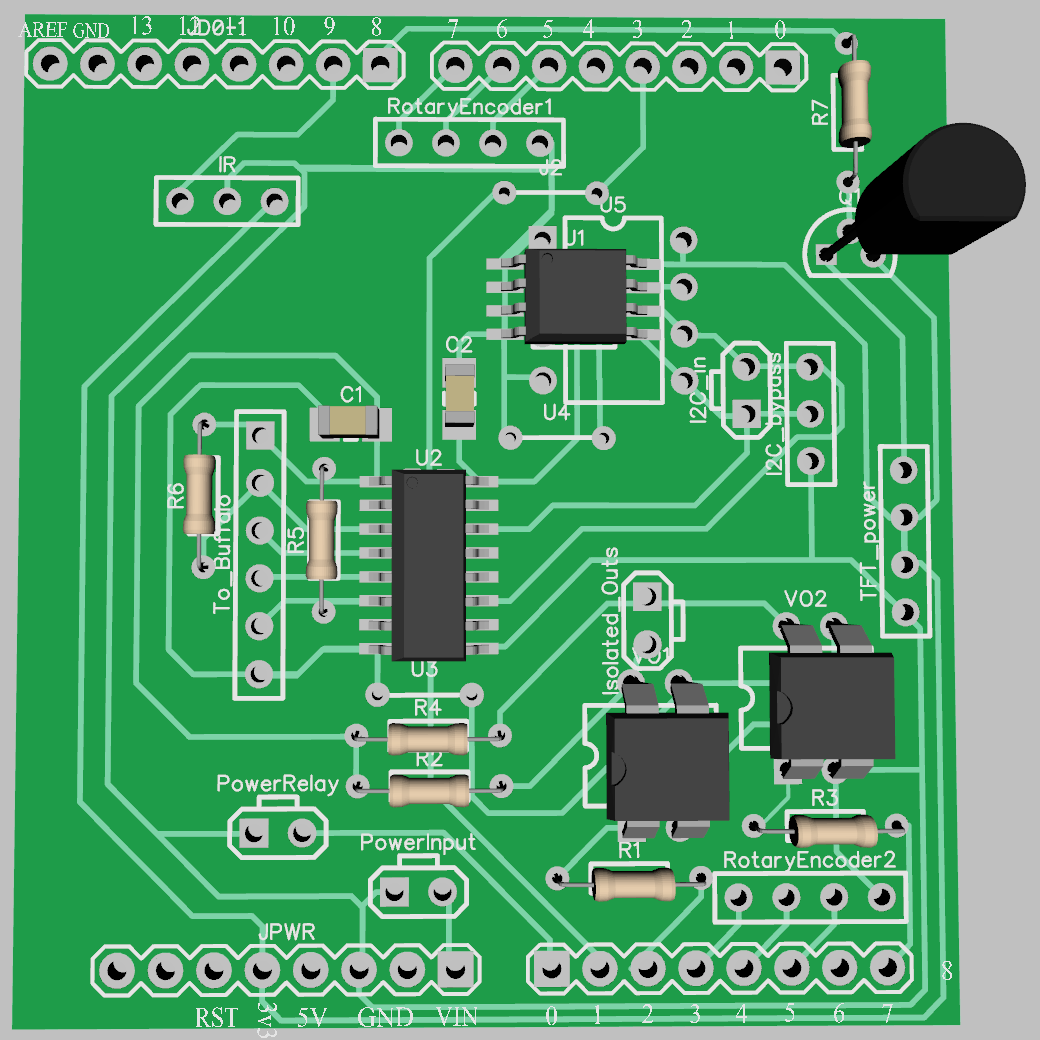
And this is what it actually looks like:
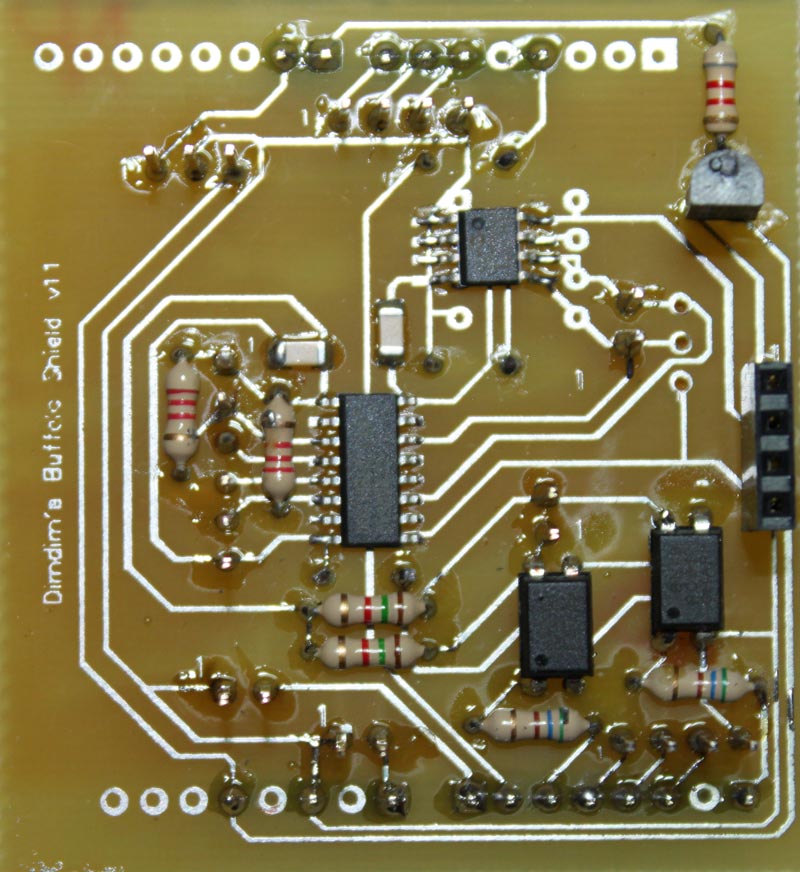
Close enough..
This shield features:
– Galvanic isolation for the I2C signals as well as 2 digital outputs (Arduino -> Buffalo) and 1 digital input (Buffalo -> Arduino).
– EEPROM chip (24LC256) either in SMT or DIP footprint.
– Backlight control for the TFT through a PWM-controlled transistor.
– Headers for two rotary encoders.
– Output for power relay (for remote on/off).
– Header for IR receiver.
This is the schematic for the shield:
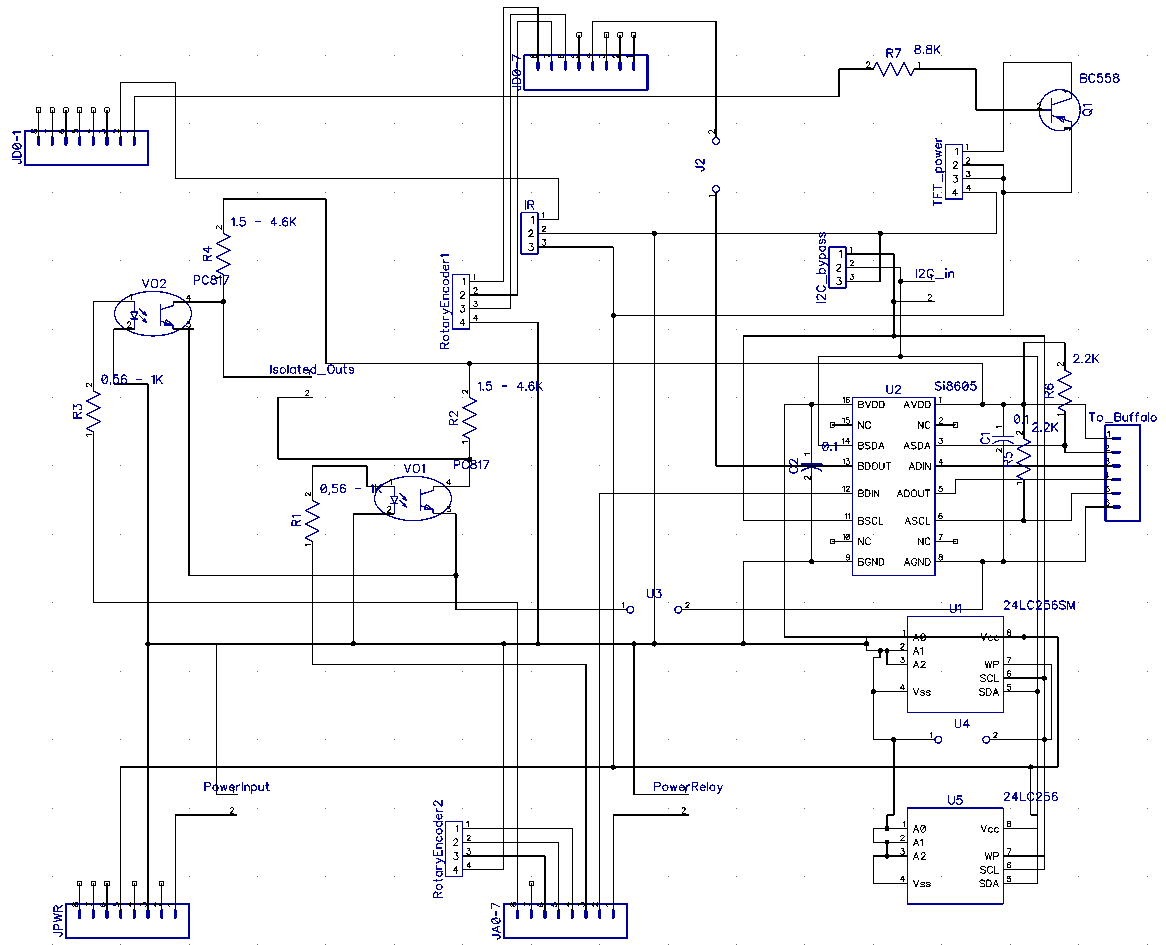
And this is the resulting PCB:
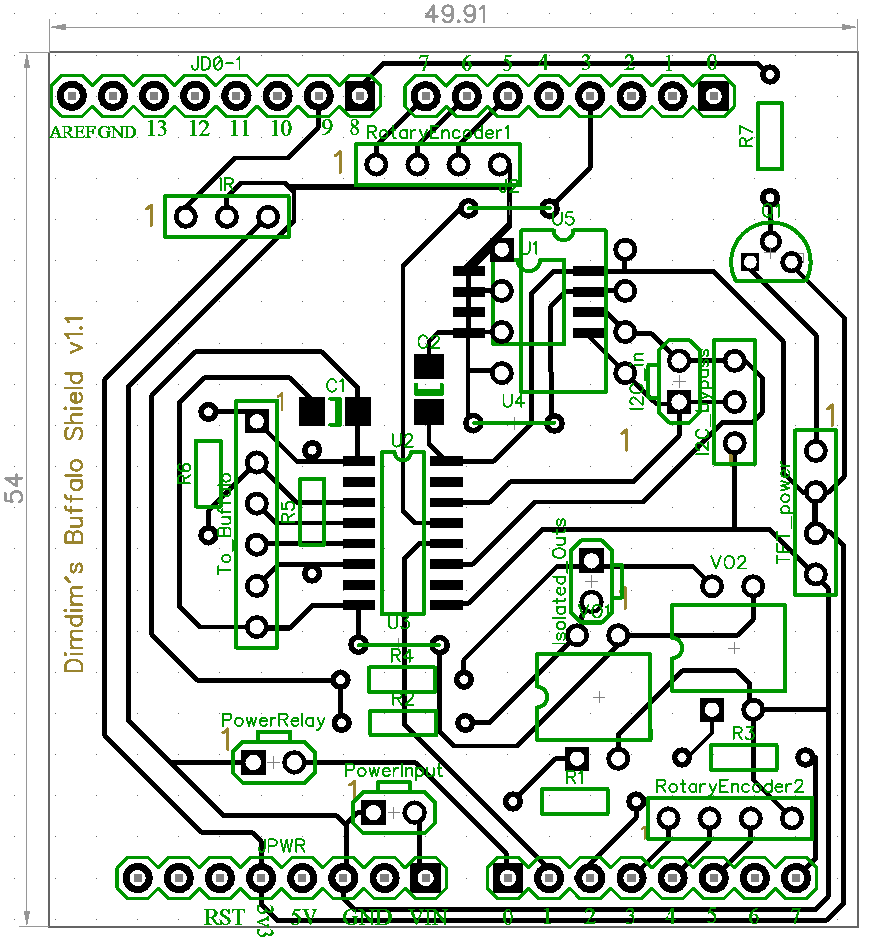
This is a description of the various headers:
IR: Use a standard 38KHz IR Receiver Module, like the TSOP4838.
1: Signal (Pin 9)
2: GND
3: 3.3V
RotaryEncoder1: Use any simple rotary encoder.
1: Left pin (Pin 7)
2: Right pin (Pin 6)
3: Selector pin 1 (Pin 5)
4: Middle Pin & Selector pin 2 (GND)
RotaryEncoder2: Use any simple rotary encoder.
1: Left pin (Pin A3)
2: Right pin (Pin A4)
3: Selector pin 1 (Pin A3)
4: Middle Pin & Selector pin 2 (GND)
I2C_In:
1: SDA
2: SCL
(note: this is the I2C connection to the Arduino. SDA should be connected to pin 20 and SCL to pin 21)
I2C_Bypass:
1: GND
2: SDA
3: SCL
(use this if / when an isolator IC (U2) is not used to send the I2C signal to the Buffalo)
Isolated_Outs:
1: Out 1 (Pin A2)
2: Out 2 (Pin A7)
TFT_power:
1: TFT Backlight LED (dimmed by Pin 8)
2, 3: 3.3V (for TFT power & pin RD)
4: GND
PowerInput:
1: GND
2: Vin (8V-12V)
(connect here the power supply to the Arduino)
PowerRelay:
1: GND
2: 3.3V out (Pin A0) in case of Due, 5V in case of MEGA
(connect here the power relay that powers on the DAC)
To_Buffalo:
1: Buffalo Vcc (3.3V)
2: SDA
3: Sidecar Control (Pin 3)
4: Lock LED input (Pin A1)
5: SCL
6: Buffalo GND

